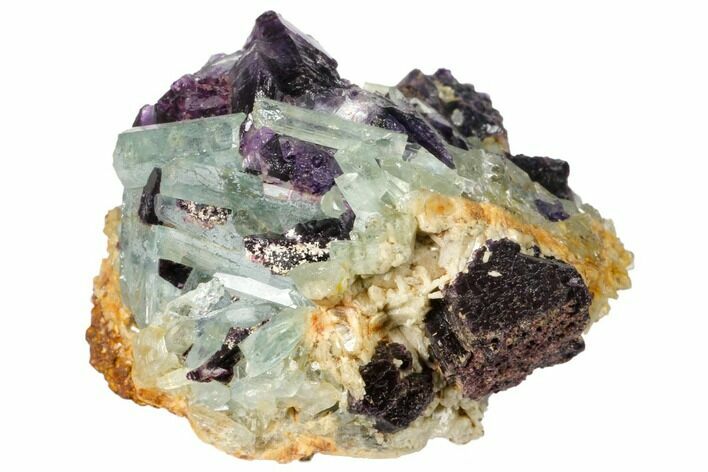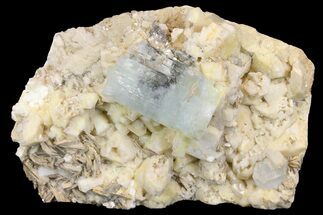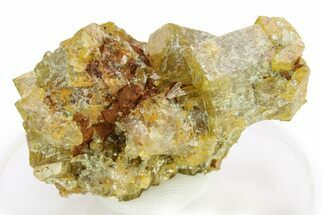This Specimen has been sold.
1.65" Aquamarine, Fluorite & Orthoclase Feldspar - Namibia
This is a gorgeous specimen that contains aquamarine crystals and purple fluorite on orthoclase feldspar, collected from the Erongo Mountains in Namibia.
Feldspars are a group of rock-forming tectosilicate minerals. They are the most common minerals on Earth, making up nearly 60% of the crust.
Orthoclase is a feldspar mineral with the chemical formula KAlSi₃O₈ and a hardness of 6 - 6.5 on the Mohs hardness scale. It is considered a key component in many igneous rock formations and is one of the most abundant minerals throughout the continental crust. It can form individual crystals, but it is most commonly known for its pink coloration within granite rock. It has many commercial uses, including application in the production of a wide variety of ceramics, and is sometimes used in the manufacturing of glass.
Beryl is a mineral composed of beryllium aluminum cyclosilicate, with the chemical formula Be3Al2(SiO3)6. Naturally occurring beryl tends to form hexagonal crystals that can reach several meters in size if given the right conditions. Completely pure beryl will be transparent and colorless, while mineral impurities frequently tint the crystals color in most specimens.
Well known varieties of beryl include aquamarine and emerald, although beryl can also be green, blue, yellow, white and red, depending on the incorporated impurities during formation. Red beryl is its rarest form, and can currently only be found in New Mexico and Utah.
Well known varieties of beryl include aquamarine and emerald, although beryl can also be green, blue, yellow, white and red, depending on the incorporated impurities during formation. Red beryl is its rarest form, and can currently only be found in New Mexico and Utah.
About Fluorite
Fluorite is a halide mineral comprised of calcium and fluorine, CaF2. The word fluorite is from the Latin fluo-, which means "to flow". In 1852 fluorite gave its name to the phenomenon known as fluorescence, or the property of fluorite to glow a different color depending upon the bandwidth of the ultraviolet light it is exposed to. Fluorite occurs commonly in cubic, octahedral, and dodecahedral crystals in many different colors. These colors range from colorless and completely transparent to yellow, green, blue, purple, pink, or black. Purples and greens tend to be the most common colors seen, and colorless, pink, and black are the rarest.
Fluorite is a halide mineral comprised of calcium and fluorine, CaF2. The word fluorite is from the Latin fluo-, which means "to flow". In 1852 fluorite gave its name to the phenomenon known as fluorescence, or the property of fluorite to glow a different color depending upon the bandwidth of the ultraviolet light it is exposed to. Fluorite occurs commonly in cubic, octahedral, and dodecahedral crystals in many different colors. These colors range from colorless and completely transparent to yellow, green, blue, purple, pink, or black. Purples and greens tend to be the most common colors seen, and colorless, pink, and black are the rarest.
SPECIES
Beryl var. Aquamarine, Fluorite & Feldspar (Orthoclase)
LOCATION
Erongo Mountains, Karibib, Erongo Region, Namibia
SIZE
1.65 x 1.4"
CATEGORY
SUB CATEGORY
ITEM
#132153
 Reviews
Reviews














